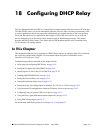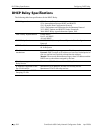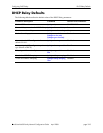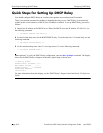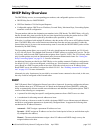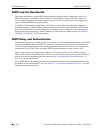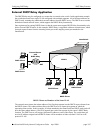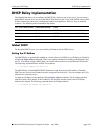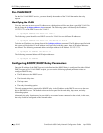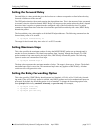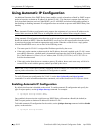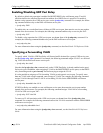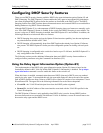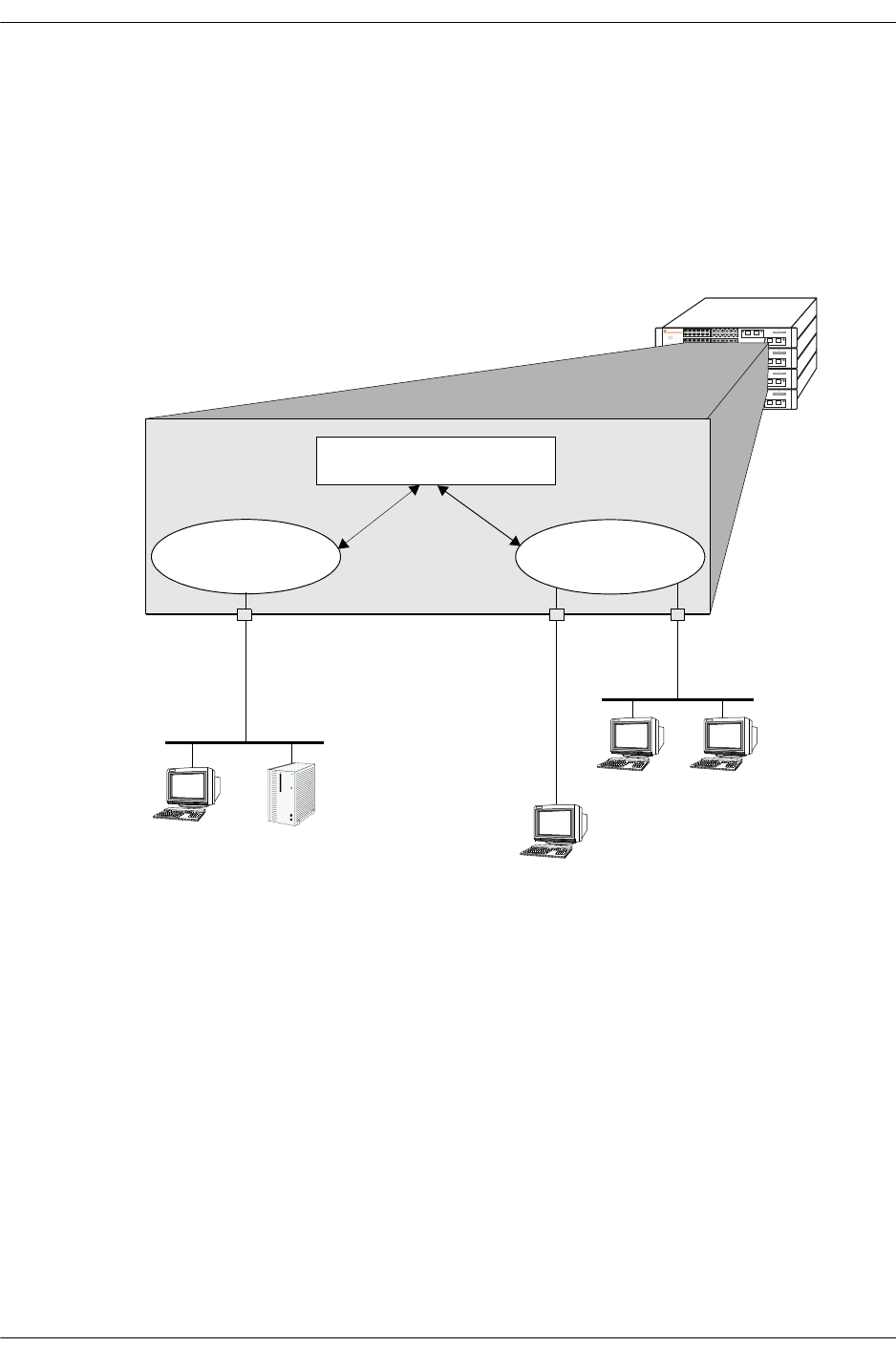
DHCP Relay Overview Configuring DHCP Relay
page 18-8 OmniSwitch 6600 Family Network Configuration Guide April 2006
Internal DHCP Relay
The internal DHCP Relay is configured using the UDP forwarding feature in the switch, available through
the ip helper address command. For more information, see “DHCP Relay Implementation” on page 18-9.
This application example shows a network with two VLANs, each with multiple segments. All network
clients are DHCP-ready and the DHCP server resides on just one of the VLANs. This example is much
like the first application example, except that the DHCP Relay function is configured inside the switch.
DHCP Clients in Two VLANs
During initialization, each network client forwards a DHCP request frame to the DHCP server using the
local broadcast address. For those locally attached stations, the frame will simply be switched.
In this case, the DHCP server and clients must be members of the same VLAN (they could also all be
members of the default VLAN). One way to accomplish this is to use DHCP rules in combination with IP
protocol rules to place all IP frames in the same VLAN. See Chapter 8, “Defining VLAN Rules,” for more
information.
Because the clients in the application example are not members of the same VLAN as the DHCP server,
they must request an IP address via the DHCP Relay routing entity in the switch. When a DHCP request
frame is received by the DHCP Relay entity, it will be forwarded from VLAN 3 to VLAN 2. All the
DHCP-ready clients in VLAN 3 must be members of the same VLAN, and the switch must have the
DHCP Relay function configured.
OmniSwitch 6648
OmniSwitch 6648
OmniSwitch 6648
OmniSwitch 6648
DHCP Client
125.0.0.1 125.0.0.2
130.0.0.13
130.0.0.14 130.0.0.15
DHCP Relay
VLAN 2
OmniSwitch
DHCP Server
DHCP Client
DHCP Clients
125.0.0.21
VLAN 3
130.0.0.21
(Router Port IP Address)
(Router Port IP Address)




